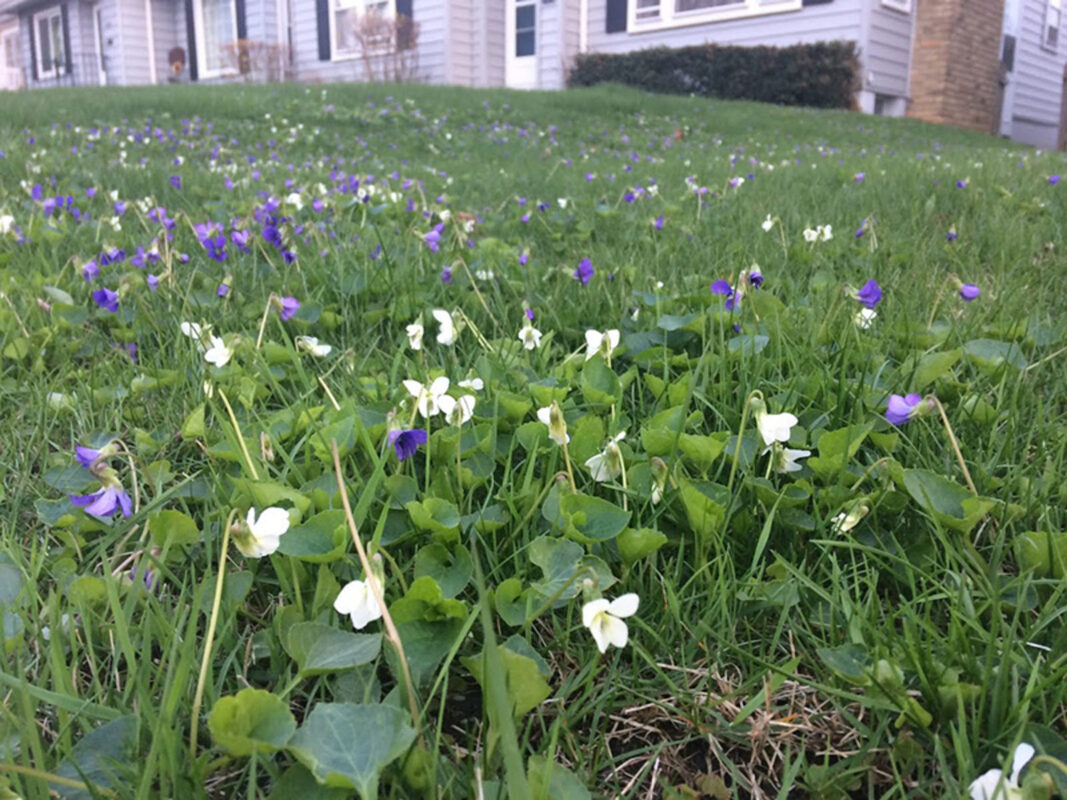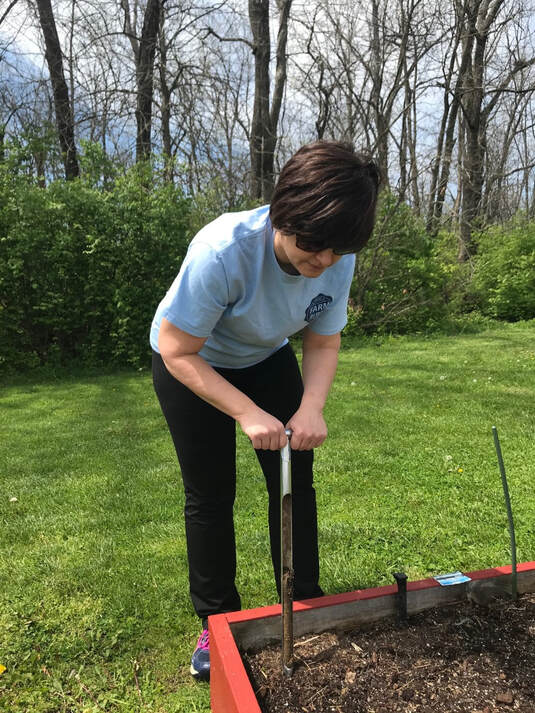|
Having a nice lawn is something that many people think about, especially during the summer. By targeting several management strategies, lawn care can become more environmentally friendly and help keep our water clean. Leave the clippings on your lawn. Over time the action of mowing and taking away the clippings can deplete the soil of valuable nutrients. Leaving the clippings returns these nutrients to the soil and can promote less fertilizer usage over time. Mow high. Adjust your lawn mower to mow in the 3 to 4 inch range. In general, grass should be in the 4 to 4.5 range at its longest. The health of the grass significantly increases when you can leave more green growth on the plant. Healthier grass means that your lawn will have less instances of disease, insect and weed issues. Keep your lawn mower blades sharp. This ensures that you are not tearing/shredding the blades of grass. Continuously tearing and/or shredding the plant can hurt the crown of the plant and ultimately kill the grass. Check at your local hardware store as to who in your local area can sharpen your blades. Fertilize in the fall. Fertilizer applications should always be based on a soil test. Fertilizing without a soil test can easily lead to over-applying fertilizer, which can cause problems for our environment such as algae blooms in our local waterways. If you choose to fertilize, a late fall application in September and then in mid to late October is the best time. Adding a fertilizer application again in mid- to late May helps keep the lawn green and healthy throughout the summer. Do not add fertilizer during or right before an expected rain event as that is throwing money away, and adding nutrient pollution to local waterways. Consider letting the grass go dormant in a dry summer. If the summer is dry, you may decide to save water and not irrigate your lawn. If you choose this option, the grass will go dormant and turn brown. Don’t worry, the grass is not dead. It will revive when cooler weather and rain come back in the fall. Grass generally does not die until you have 4-6 weeks of very dry weather. Choosing to water is your personal decision but know that you should water deeply and infrequently rather that quickly and often. As a general rule apply a half-inch of water every four weeks after the lawn turns brown. Also, it is important to minimize traffic on a dormant lawn to reduce possible damage. Rethink your lawn. Did you know that we can thank pollinators for 1 in 3 bites of our food? Unfortunately, grass does not offer the nectar or pollen sources that pollinators need to survive. Consider turning part of your landscape into a pollinator garden or admiring the beauty that clover, violets and dandelions provide in a sea of green. It is important to do your research on local ordinances especially if you choose to make your yard a “pollinator lawn”. To check out more information on pollinator lawns, go to Michigan State University, https://pollinators.msu.edu or the Blue Print Partnership, https://bluethumb.org/ . Photo credit: Metro Blooms For additional questions on conservation minded lawn care, contact the Warren County Soil and Water Conservation District main office at 513-695-1337.
Additional Resources:
29 Comments
Soil tests are an essential part of farming and gardening because they can help determine plant nutrient needs and plant selection decisions thus helping to keep money in your pocket. Testing soil has often been compared to visiting a doctor for a health check-up. Physicians use tests to help them prescribe medications and the same should be done for our soil. Having too much of one nutrient can affect our crops badly and affect the productivity, on the other hand not having enough nutrients to sustain plants can be detrimental to the crop. Whether you are a wanting to grow a small vegetable garden or a thousand acres of corn; soil testing is a good thing to give you a basis on where to start. Testing soil helps to keep the soil healthy by measuring what is exactly in the soil. Soil labs then give recommendations on what to apply to ensure excess nutrients are not available to escape into groundwater, streams and lakes where they contribute to environmental problems (i.e. algal blooms, hypoxia, etc.). A big water quality issue in the State of Ohio that is affecting not only lake Erie but inland lakes such as Buckeye Lake, Grand Lake St. Marys and even Caesar Creek is excess phosphorus. It is important that phosphorus is not added if the soil does not need it. In many parts of the country fertilizer companies are not including phosphorus in their mixes to ensure phosphorus is not over applied. Soil sampling can be done any time of the year but it is best not to take samples in high rain events. One test can be taken for an area if there are no major topography changes or the area has not been treated differently in the past (I.e. pasture in one area of the field and crops in the other area). It is recommended that a separate test be taken in that area that was managed differently so that results are not skewed. It is also recommended to lump no more than 20 acres together in one test.
The field should be walked in a zig-zag pattern, with a subsample taken every few feet. For small areas such as vegetable garden, 5-10 subsamples are sufficient and 10-15 subsamples for larger areas such as lawns and fields. Subsample depths should be taken at the following:
|
Details
Warren County SWCD Staff BlogA blog to keep you informed on all the latest news at Warren County SWCD and in the conservation world. Archives
May 2024
Categories
All
|
|
|
Contact:PHONE: (513) 695 - 1337
EMAIL: [email protected] HOURS: Monday - Friday 7:30am - 4:00pm (except holidays) Connect:Warren County Soil & Water Conservation District Copyright © 2016
Warren SWCD Privacy Notice. Emails are serviced by Constant Contact. Constant Contact's Privacy Notice. |


